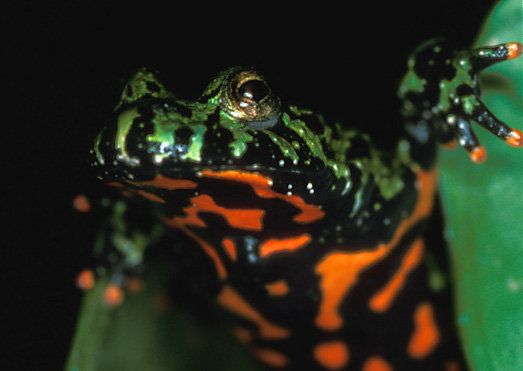Can We Prevent a Second Amphibian Pandemic?
by Tiffany Yap
When the fungal pathogen Batrachochytrium dendrobatidis (Bd) was first described in 1999, action was not taken rapidly, and a global amphibian pandemic ensued. We have since found that Bd has caused the declines and extinctions of over 200 species worldwide, and, as it continues to spread, numerous amphibian populations are constantly at risk. With the recent discovery of a second, closely related fungal pathogen, Batrachochytrium salamandrivorans (Bsal), and its presence in international trade, a second amphibian pandemic is looming. In an article published in EcoHealth, Yap et al. (2017) review what is known about Bsal - its biology, disease pathology, known distribution and susceptible species, diagnostic methods, and potential treatments. They discuss the global efforts to minimize its spread, highlighting the efforts of the Bsal Task Force, and they bring attention to regulatory gaps that impede a rapid response.
Proactive policy action was and continues to be an important step for amphibian diversity conservation. Almost two years ago the United States placed restrictions on salamander imports to prevent the spread of Bsal, and recently Canada followed suit. These actions seem to be benefiting local salamander populations; several published reports indicate that Bsal has not yet been detected in captive or wild salamanders in North America (Klocke et al. 2017, Govindarajulu et al. 2017). In addition, the United States Geological Survey has been conducting targeted surveys throughout the United States, and so far all salamanders have been found to be Bsal-free. While this is great news, salamanders are not yet in the clear.

Initially it was believed that only salamanders could be infected by Bsal; however, in April 2017 a study came out showing that captive midwife toads (Alytes obstetricans) could be infected and transmit the pathogen to cohoused salamanders (Stegen et al. 2017). Alarmingly, Bsal has also been found on Yunnan fire-bellied toads (Bombina microdeladigitora), both in the wild in Vietnam and in trade animals in Germany (Nguyen et al. 2017). This alternate pathway for Bsal to spread through frog vectors in trade poses a severe threat. The scientific community is now calling on the United States Fish and Wildlife Service to fortify their response to this crisis by extending a moratorium on all amphibian imports until a clean trade program is implemented to ensure that all trade animals are free of Bsal and any other disease.
Subscribe via RSS
